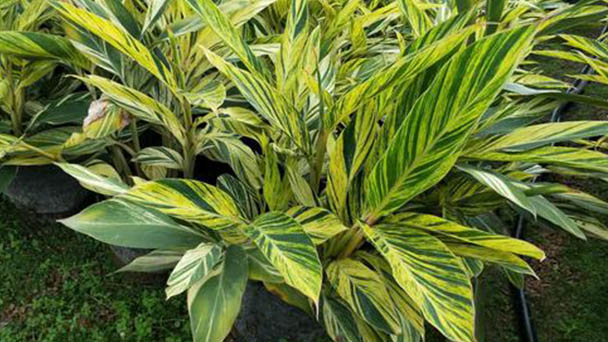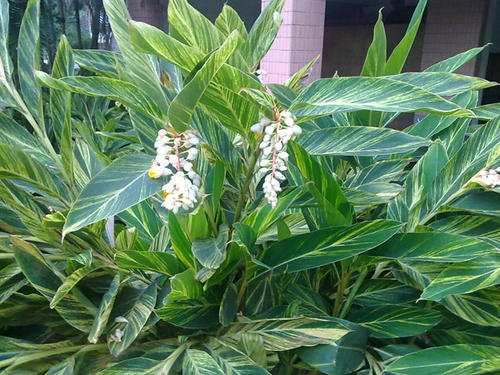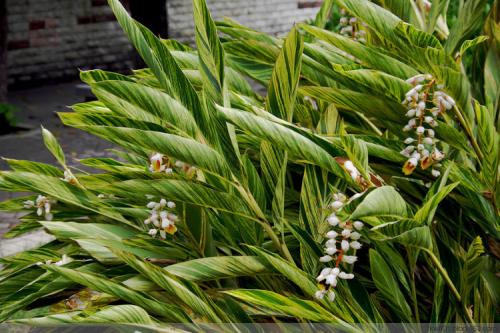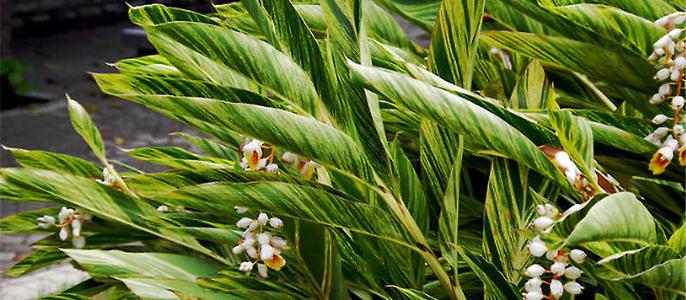How to Grow and Care for Shell Ginger
Written by Maggie
Dec 03 2021

Shell Ginger, also called Alpinia zerumbet, is a leaf-watching perennial herbaceous plant of the genus Ginger. Shell Ginger has beautiful leaf color and blooms from June to July. It has elegant flowers and attractive flowers. Potted plants are suitable for hall decoration. Outdoor growing adorns the courtyard, pool or corner, with a unique style. Today, we will briefly introduce growing Shell Ginger and Shell Ginger care. Dear friends, take a look.

Shell Ginger Growing Conditions
Best growing soil: Shell Ginger cultivation management is extensive. Cultivation soil using fertile, well-drained garden soil, with the mature dry feces mixed with calcium superphosphate as the base fertilizer. Nitrogen fertilizer should not be too much, it will affect the color of the leaves and is too tender.
Growth humidity requirements: shell ginger likes wet and humid environments, and is more resistant to water and moisture, but not to drought. In the spring to summer growth season in addition to watering, also maintain a higher air humidity, especially when the summer weather is dry.
Best growth temperature: Shell Ginger is not cold resistant and can only withstand the temperature of about 8℃ in general. When the temperature drops to about 10℃, wrap the plant with paper, then cover it with a plastic film bag and store it in the room to survive the winter.
Best Growth Light: Shell Ginger grows in bright or semi-cloudy environments. Indoor appropriateness is put in the place with bright light. Outdoor, in late spring and early summer, there should be appropriate sunshine. In the hot summer shade, or placed under the tree sparse shade, the pattern on such leaves will become more obvious. If placed in a dark environment for a long time, the leaf color fades to green and loses its original bright color.

Shell Ginger Care
Shell Ginger Fertilizer Care
Fertilize once a month during the growing period, mainly with phosphorus and potash. The soil in the basin is kept moist. Water is often sprayed on the leaves in summer and autumn, and the leaves are put in the semi-shady place in midsummer to make the leaf markings more obvious. When growing outdoors, choose well-drained loose loam, see more sunshine in late spring and early summer, a little shade in midsummer, autumn and winter will be dug out and put indoors for storage.
Shell Ginger Watering
Shell Ginger likes a humid climate environment, and should pay attention to keep the soil moist when farming, avoid too dry. Water should be often sprayed on the leaves of Shell Ginger in summer and autumn to increase air humidity. In winter, Shell ginger is in hibernation state, so water less appropriately.
Shell Ginger Pruning
Take the mother plant out of the flower pot, shake off the excess soil in the pot, and separate the coiled root system as far as possible. With a sharp knife, it is cut into two or more plants. Each separated plant should have a corresponding root system, and its leaves should be properly pruned to help it survive.
Soil replacement: Shell ginger seedlings plate, the first in the pelvic floor in a 2-2 cm thick coarse grained matrix or ceramsite as a filter layer, cover it with full of rotten organic fertilizer as basal, thickness is about 1 to 2 cm, then cover with a layer of substrate, about 1 to 2 cm thick, and then into the plant, to separate the fertilizer from the root, avoid burning roots.
Shell Ginger Propagation
Shell ginger propagation can be divided into stem method and tissue culture method.
Stem division: Shell Ginger has strong tillering ability and rapid growth, and it is easier to cultivate seed plants with stem splitting propagation methods. Shoot propagation is generally carried out in late spring and early summer with the combination of repot.To do this, pour out the large clump of Shell ginger from the pot and divide it into small clumps of 3-5 pieces per clump, including 1-2 new buds. After dividing the cluster, it can be planted in a pot together with underground stems and roots. When the ground is planted, it can also be divided into small clumps and planted in the container for about 2 months, and then transplanted after it grows new roots. In order to increase the survival rate of high-score plants, some leaves in the lower part of the stem can be cut off to reduce transpiration when dividing plants. In addition, new plants in the pot of dividing plants should be managed in a shaded place and watered adequately.
Tissue culture: Although Shell Ginger's stem splitting method is faster in propagation, tissue culture can be used when large-scale propagation of seedlings is needed. The explants generally use the tender buds that just sprout underground, but the decontamination is more difficult. During the operation, the underground stem of the mother plant can be washed first, soaked in 50 {bf} carbendazim 1000 times solution for 1 day, and then put into a black plastic bag at a temperature of about 25℃ to promote bud. When the bud grows to about 2 cm, the growing point inside can be peeling off as explained. The medium of primary culture was MS 3 mg/L 6-BA 0.2 mg/L IBA; The subculture medium was MS 2 mg/L 6-BA 0.2 mg/L IBA; The medium for rooting induction was MS 0.5mg/L IBA.
Shell Ginger Disease & Insect Control
The main diseases and insect pests of Shell Ginger include leaf blight and brown spot. In the early stage of leaf blight, Bordeaux liquid is sprayed 1 to 3 times every 7 to 10 days. When a brown spot occurs, we can spray 70 {BF} methyl tobujin wettable powder 1000 times liquid to control.

Latest Updated
- Benefits of Bugleweed - 7 Science-backed Health Benefits
- Bugleweed Dangers & Side Effects - Is It Poisonous?
- How to Plant Evergreen Trees - What You Should Know
- When to Plant Evergreens - Grow Guide for Evergreen Trees
- 12 Wonderful Evergreen Shrubs for Your Garden
- 12 Popular Evergreen Plants with Pictures for Beginners
- When And How To Prune A Lilac Bush Like a Pro
- How to Grow & Care for Lilac Vine (Hardenbergia Violacea)
- Japanese Lilac Tree (Syringa Reticulata) Care & Propagation Guide
- Shumard Oak Pros and Cons - What to Know
Popular Articles
- Winter maintenance of Antirrhinum Majus
- How to Grow Terminalia Mantaly Tree
- How to Grow and Care for Crossostephium Chinense
- How to grow Antirrhinum Majus in spring
- Peristeria Elata (Dove Orchid) Profile: Info & Care Guide
- Underwatered Snake Plant (Sansevieria Trifasciata) - Signs And How To Fix
- How to Care for Brazilian Jasmine Plant (Mandevilla Sanderi)
- How to Grow & Care for Graptopetalum Purple Delight in Summer
- Rosa Chinensis (China Rose): Plant Growing & Care Tips
- How to Care for Baby Sun Rose (Aptenia Cordifolia)